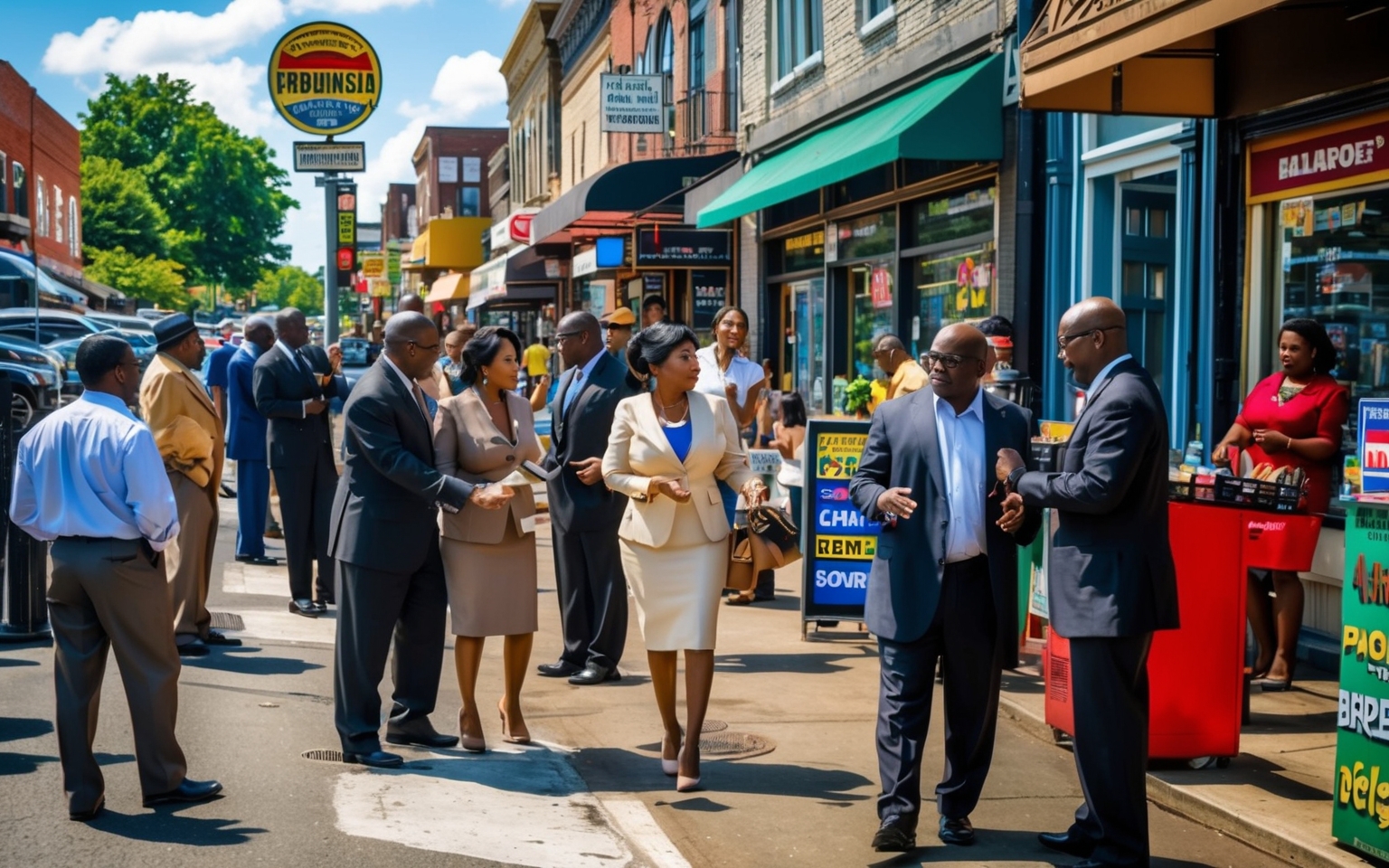The landscape of social policies in recent years has been marked by attempts to uplift the economic status of Black Americans, spotlighting initiatives that aspire to bridge historical economic divides. However, while these policies have paved the way for certain advancements, persistent challenges continue to impede progress.
Current Social Policies: Progress and Shortcomings
Significant legislative actions such as the American Rescue Plan, the Inflation Reduction Act, and the Infrastructure Investment and Jobs Act have been crucial in shaping economic prospects. The American Rescue Plan of 2021 fortified the Child Tax Credit and Earned Income Tax Credit, vital aids for Black families. The 2022 Inflation Reduction Act seeks to democratize access to burgeoning sectors, notably electric vehicles and clean energy jobs, for disadvantaged communities. Additionally, the Infrastructure Investment and Jobs Act directs funds toward improving broadband access and transportation in underserved regions.
Despite these initiatives, significant barriers remain. The racial wealth gap endures, as demonstrated by disparity between the median wealth of white and Black families. Employment figures reveal similar discrepancies, with Black unemployment perennially higher than for whites. Furthermore, Black entrepreneurs face challenges accessing capital and securing government contracts, signaling structural inequities in business opportunities.
Improving Income and Poverty Rates
Economic indicators show some positive trends. The poverty rate among Black Americans achieved a record low, reaching 19.5% in 2021, a decline from 30% a decade prior. The median income for Black households rose noticeably during this period. Crucially, the expanded Child Tax Credit played a pivotal role in slashing Black child poverty by more than one-fourth. Despite strides forward, stark disparities linger when juxtaposed against the economic status of white Americans, with a Black poverty rate over twice as high.
Similar discrepancies appear in income levels. While there is progress, median Black household income remains only 60% of that for white households, underscoring ongoing income inequality that demands continued policy attention and intervention.
Labor Market Dynamics
Positive shifts in the labor market include the lowest Black unemployment rate recorded in 2019 prior to the pandemic, and an uptick in labor force participation. Yet, systemic issues persist: Black workers are disproportionately represented in lower-wage jobs and underrepresented in high-paid sectors. Discrimination extends beyond hiring, with Black individuals facing inequities in promotions and salaries.
Structural biases ingrained within the labor ecosystem highlight urgent calls for reform to establish equitable opportunities across all employment strata.
Wealth, Asset Building, and Ownership
Efforts to close wealth and asset disparities showcase both progress and setbacks. Black homeownership has climbed slightly, and there is a modest increase in Black-owned businesses. Still, wealth accumulation remains hindered by the persistent wealth gap. For example, significantly fewer Black households report stock ownership compared to white households, perpetuating economic inequality.
Black families also experience existential barriers, such as limited capital transfers like inheritances, a disparity lacking in ancestral impetus for wealth creation.
Evaluating and Improving Policy Approaches
Education and job training initiatives have manifested encouraging outcomes through enhanced funding toward Historically Black Colleges and Universities (HBCUs) and apprenticeship programs, yet disparities in public schooling quality and educational finance serve as double-duty barriers.
In the realm of capital access, programs like the New Markets Tax Credit have unlocked investments for historically undercapitalized communities, with improvements from Community Development Financial Institutions’ lending. However, bank redlining and uneven mortgage lending require targeted redress.
Geographically focused development policies, such as Opportunity Zones, wield varying success; they occasionally risk undermining equitable economic development by inducing resident displacement without affordable housing countermeasures.
Strategies for Enhanced Economic Equity
Moving forward, tailored, race-conscious initiatives are necessary to resolve the enduring impacts of systemic discrimination. Emblematic programs like the expanded Child Tax Credit should receive permanent endorsements, given their positive impacts. Additionally, a larger capital influx for Black entrepreneurs via grants and sustained financial support should be prioritized. Fortifying laws against discrimination and enhancing economic infrastructures in Black communities are foundational strategies demanding further development.
Raising financial literacy and spearheading wealth-building mechanisms is paramount to crafting sustainable economic advancement for Black minority communities.
In summation, twofold efforts that address past injustices and advance foundational reforms are crucial for molding a fair economic foundation for Black Americans. Onward-facing policies must harness successful strategies, pushing toward greater economic balance across racial landscapes.
With resolute, informed policymaking, significant strides toward economic equity for Black communities are both attainable and essential.
#Economics #SocialPolicy #RacialEquity #EconomicProgress #PolicyAnalysis


